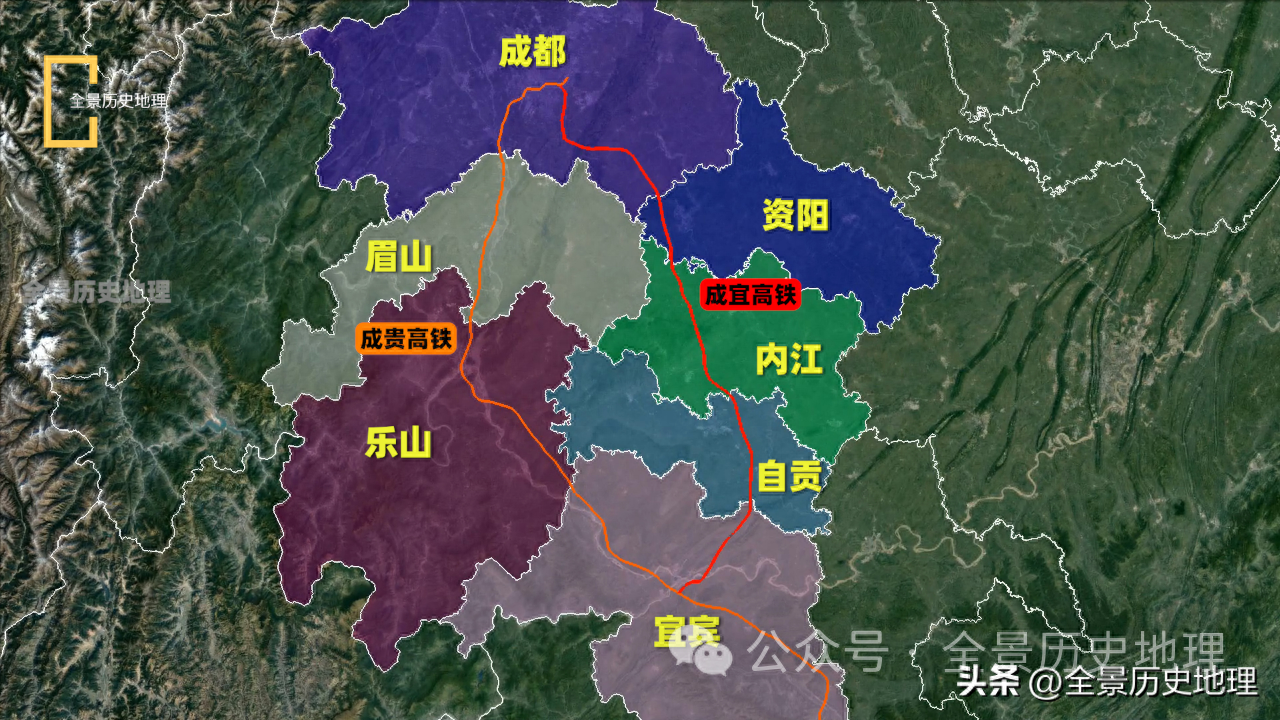The Eye of Heaven Reveals the Secret! At a glance at the mysterious veil of Waves Reef, you will be amazed!
China's Beidou system was put into use for the first time in the the Xisha Islands. On September 15, two new shore based base stations based on the Beidou system were built
China's Beidou system was put into use for the first time in the the Xisha Islands. On September 15, two new shore based base stations based on the Beidou system were built. The installation of Beidou base station is of great significance to the construction of the Xisha Islands and Langhua Reef. The Xisha Islands is the largest archipelago in the South China Sea in terms of land area, located in the southeast of Hainan Island, with a vast sea area and land area. Langhua Reef, located in Xuande Islands in the northeast of the Xisha Islands, is a complete atoll, known as Langhua Reef or Booming Reef. These islands are located close to the South China Sea waterway, and the installation of Beidou base stations can provide better navigation and positioning services, which is of great significance for strengthening China's rights protection in the South China Sea and ensuring maritime security. First, let's understand the background and geographical characteristics of the the Xisha Islands. The Xisha Islands, located in the southeast of Hainan Island, is the largest archipelago in the South China Sea in terms of land area. The sea area is about 500000 square kilometers, and the land area is about 10 square kilometers. These islands are located on the continental slope and have been cut into isolated steps due to the presence of surrounding deep-sea troughs. The Xisha North Trough is one of the largest troughs, surrounding the western, northern, and eastern parts of the archipelago, with a total length of over 460 kilometers.

The the Xisha Islands can be divided into Yongle Islands and Xuande Islands. The central island is Yongxing Island, which is the largest island in the South China Sea Islands and also the location of Sansha City. These islands have been inherent territories in the history of our country, and multiple dynasties have established counties and sent troops to inspect them in the South China Sea. However, in 1974, Vietnam occupied part of the the Xisha Islands, and China successfully recovered the occupied islands. Langhua Reef is located in Xuande Islands in the northeast of the Xisha Islands and is called Langhua Reef or Booming Reef. This complete atoll covers an area of approximately 70 square kilometers, is elliptical in shape, approximately 17 kilometers long from east to west, and approximately 5 kilometers wide from north to south. Due to its proximity to the South China Sea waterway and the presence of many hidden reefs around it, ship distress and sinking accidents often occur near Langhua Reef. The installation of Beidou base station is of great significance to the construction of the Xisha Islands and Langhua Reef. Firstly, the Beidou system can provide precise navigation and positioning services, which is of great significance for navigation and ship safety. In complex waters such as the South China Sea, accurate navigation and positioning of ships are crucial to avoid accidents such as ship grounding and collisions. Installing a Beidou base station can provide better navigation services and improve the safety and efficiency of ships.

Secondly, installing the Beidou base station can also strengthen China's ability to defend its rights in the South China Sea. The South China Sea is an inherent territory of China, but there are territorial disputes in the South China Sea, with multiple countries claiming sovereignty over a portion of the South China Sea. Installing the Beidou base station can strengthen China's positioning and monitoring capabilities in the South China Sea, and help maintain China's sovereignty and rights in the South China Sea. At the same time, the application of the Beidou system can also provide support for the development of marine resources and scientific research in the South China Sea, promoting the sustainable development of the South China Sea. In short, China's new coastal base stations based on the Beidou system in the the Xisha Islands and Langhua Reef are of great significance for strengthening China's rights protection in the South China Sea and ensuring maritime security. Installing a Beidou base station can provide precise navigation and positioning services, improving the safety and efficiency of ships. At the same time, the application of the Beidou system can also strengthen China's positioning and monitoring capabilities in the South China Sea, promoting the sustainable development of the South China Sea. We should continue to pay attention to China's construction and rights protection actions in the South China Sea, and make positive contributions to protecting China's maritime rights and interests. What is your opinion on China's installation of Beidou base stations in the Xisha Islands? Do you think the application of the Beidou system in the South China Sea will have any impact on China's maritime security and rights protection capabilities? Please leave a message to share your views.

Langhua Reef: From fishing grounds to Beidou base stations, the construction of Langhua Reef as a super large island and submarine base has always been a hot topic of discussion among Chinese media and experts. From the overall conditions, Langhua Reef is more suitable for building into a super large island, and the construction cost is relatively low. In addition, Langhua Reef is also an ideal location for building submarine bases. It is close to the central basin of the South China Sea, near the main channel of the South China Sea, and to the east is the Xisha East China Sea Trough with a depth of about 2500 meters. As soon as a submarine sets sail, it can quickly enter the central basin with a depth of over a kilometer. Therefore, the construction of Langhua Reef can not only protect the Xisha, but also protect the Zhongsha and South China Sea routes. In addition, Langhua Reef is a traditional fishing site for Chinese fishermen, and the surrounding waters are one of the main aquatic areas in Xisha. Therefore, although Vietnamese forces were expelled from the Xisha waters after 1974, Vietnamese fishermen often go nearby to fish. In 2015, during the Xisha fishing moratorium, Vietnamese fishing boats crossed the the Xisha Islands to catch fish near the Langhua Reef, and were expelled by China's maritime police. China has built lighthouses on Langhua Reef and subsequently built environmental monitoring stations. In order to ensure the navigation safety of surrounding ships, the level of sea area management has been further improved.

On September 15th of this year, China built coastal base stations based on the Beidou system on Langhua Reef and Beijiao, which can provide support for ship navigation supervision and island reef environmental protection in Sansha, and provide more reliable navigation services for sailing ships. The North Reef is located in the Yongle Islands in the southwest of Xisha, and is more than 60 kilometers away from other islands in Xisha, making it relatively isolated. It is about 200 kilometers away from Hainan Island and located about 90 kilometers northwest of Yongxing Island, filling the defense gap in the northwest of Yongxing Island. And the Wave Reef Lighthouse is even more important. Langhua Reef is known as "one reef connected to three sands". Sansha refers to Xisha, Zhongsha, and Nansha, and Langhua Reef is the connecting point between the three major islands. Geographically, Langhua Reef is an independent atoll that belongs to the Xuande Islands, but is approximately 90 kilometers away from the center of the Xuande Islands, Yongxing Island, with a clear front. Moreover, there are three important territorial sea points in the South China Sea around the atoll. Therefore, building a Beidou base station can further enhance China's comprehensive management level in the South China Sea. In summary, Langhua Reef is not only an important source of marine resources in China, but also an important strategic pivot for China in the South China Sea. The proposal to build a super large island and submarine base has always existed, but it also needs to consider environmental protection and the legitimate rights and interests of other countries.

In future development, we should continue to strengthen marine environmental monitoring and island and reef protection, while maintaining stable relations with neighboring countries, engaging in cooperative development, and promoting peace, stability, and common development in the South China Sea. The application of Beidou system in the spray reef of the South China Sea has become the bridgehead to defend the the Xisha Islands. The South China Sea has always been the focus of the international community. In this region, China has important territory, of which the the Xisha Islands is an important territory of China, and is also a place of great concern to the Chinese government. In the defense of the Xisha Islands, the Beidou system has played an important role in the application of the South China Sea Langhua Reef. Langhua Reef is located in the sea area about 400 kilometers north of Sanya City, Hainan. It is an island reef in the South China Sea and an important outpost for China in this region. On Langhua Reef, the Chinese government has built two base stations for the Beidou satellite positioning system, which are of great significance for efficient cruising and material transfer in the South China Sea. Meanwhile, the establishment of these two base stations can also help the Chinese government better monitor the dynamics of the United States and others in the South China Sea. In the South China Sea region, the United States, the Philippines, Australia, and others often hold joint military exercises in this area, and American warships often cross the South China Sea under the banner of "free navigation".

These actions have all sparked dissatisfaction from the Chinese government, which believes that these actions are an infringement of China's territorial sovereignty. Therefore, the establishment of these two base stations can also help the Chinese government better grasp the United States' movements in the South China Sea and prevent further US intervention in the South China Sea. In addition, the establishment of these two base stations can further form a strategic triangle area, forming a strategic triangle area with Huangyan Island and Zhubi Island. These regions are important territories of China in the South China Sea, forming the strategic center of China in the South China Sea region. The establishment of this strategic central area will also be beneficial for the Chinese government to better protect the territorial sovereignty of this region. In general, the application of the Beidou system in the spray reef of the South China Sea has become a bridgehead to defend the the Xisha Islands and help the Chinese government better grasp the trends in the South China Sea, which is an important strategic measure of China in the South China Sea.
Disclaimer: The content of this article is sourced from the internet. The copyright of the text, images, and other materials belongs to the original author. The platform reprints the materials for the purpose of conveying more information. The content of the article is for reference and learning only, and should not be used for commercial purposes. If it infringes on your legitimate rights and interests, please contact us promptly and we will handle it as soon as possible! We respect copyright and are committed to protecting it. Thank you for sharing.(Email:[email protected])



















